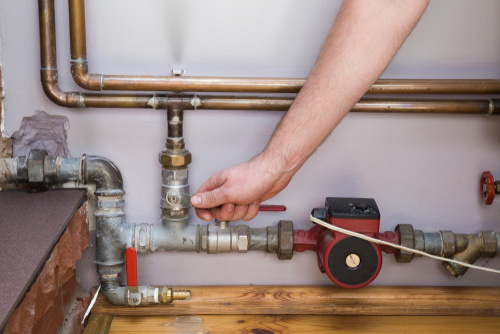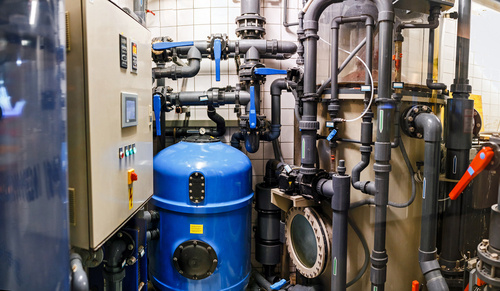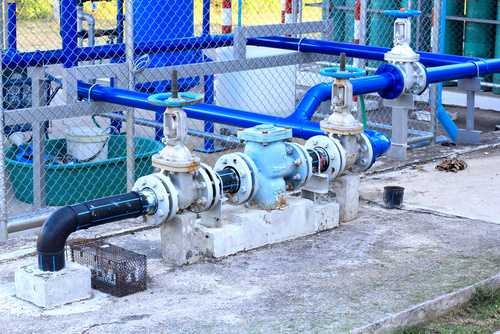Getting Your Plumbing System Ready For Building Re-openings
As restrictions are starting to loosen around the country, many businesses are beginning to create the outlines for their reopening plans. For some commercial properties, this means they may be able to open their doors again for the first time, like gyms.
For others, this means increasing their capacity to serve or having a new capability, like restaurants opening up for indoor dining. Most of the efforts that business owners are providing in this area are focused on minimizing COVID-19 spread. This makes perfect sense, but if a building is just going back to regular use after months of inaction, there are other systems to look at. A plumbing system is a perfect example. Here’s what you should be looking at before reopening your building.
Table of Contents
Flushing Your System
Most local water departments are still making an effort to sample and test drinking water on a regular basis. However, depending on how long your business wasn’t in operation, water in your building may not have been used. As a result, it may have been sitting in pipes for months or weeks. As a result, it’s important to fully flush out your plumbing system before restarting operations. This is mainly because any stagnant/standing water can lead to the increased risk of the spread of Legionella and other bacteria. This includes basic plumbing systems as well as water features and hot tubs/spas.

Here’s an overview of the steps you need to take to fully flush out your plumbing system:
— Disconnect device filters and aerators
— Find the cold water faucet that’s closest to the water entry point. Let this flow for 20 minutes
— Flush any appliances that utilize water. This can include dishwashers and ice makers. For example, run an empty load before putting in actual dishes
— Flush toilets, water features, and spas. Directives here will vary by manufacturers
— Turn the hot water heater to 140 degrees at minimum for 30 minutes, then turn on the tap. Let it flow long enough to drain the heater
Consider A Water Management Plan
If you’re concerned about waterborne bacteria after a long period of non-use, it may be a good idea to implement a proper water management plan. This generally entails figuring out what devices and parts of your system have the largest risk of bacteria growing in standing water. It may also be a good idea to restrain certain parts of the plumbing system until you are more confident in their safety. Make sure your reopening plan includes enough time to consult with a plumber if needed.

Check for Sewer Odors
Nothing will instantly turn away your returning customers/clients than the smell of sewage anywhere, especially coming from a sink or shower. However, it may not instantly be clear exactly where the smell is coming from. The root cause is generally water in the trap portion of your drain under the sink evaporating for sinks. This tends to happen when the water in the sink hasn’t been used in a while. When this happens, the water is no longer present to stop sewer gas from backing into the drain, creating the trademark odor. The good news is that turning on the water and letting it run, while flushing any of your toilets, is generally enough to solve these issues.
Scout for Signs of Leaks
For safety reasons, you may have not entered your building for quite some time, perhaps even since lockdown measures were first enacted. As a result, a water leak in your plumbing system can easily develop and possibly grow, leading to water damage as well as higher utility bills. Before opening, be sure to look around the property for any potential signs of leaks since you shut down. In some cases, these are obvious, like water damage or signs of mold in parts of the building. In other cases, they are more subtle. Part of what makes this harder is one of the telltale signs, higher water bills, may not be available since there was little to no water usage.
Reaching Out To Your Plumber For An Inspection
When it comes to working with your plumbing system, there’s ultimately going to be a finite number of steps you can do on your own. There are only so many checks you can make and, more importantly, only certain parts of your system that you will be able to access. As a result, it’s important to make sure that you have a plumber to properly inspect your property before you open it up to the public. The main reason for this is that you want a full examination of any changes that may have occurred during your time on hiatus. This will ensure that you don’t find yourself opening up again, only to have to rapidly shut down because of a leak or similar issues.

For commercial buildings planning to prep their building plumbing for a safe reopening, it’s essential that you not only look at the basics but other issues that can happen during your hiatus from regular operations. This means that you want to work with plumbers familiar with your plumbing system and use the best technology on the table to make sure that their process is a smooth and efficient one. After all, it is easier for them to monitor their progress, the lesser chance of you having plumbing issues.
As a result, when you are talking to different plumbing contractors to work with, you should not just ask them questions about their expertise and qualifications, but also the type of technology they include. Something you want to see is project management software like eSUB. These tools are essential to ensure that all the teams of a contractor you are working with provide in-sync service. This trickles down to lower costs and more efficiency for you.


